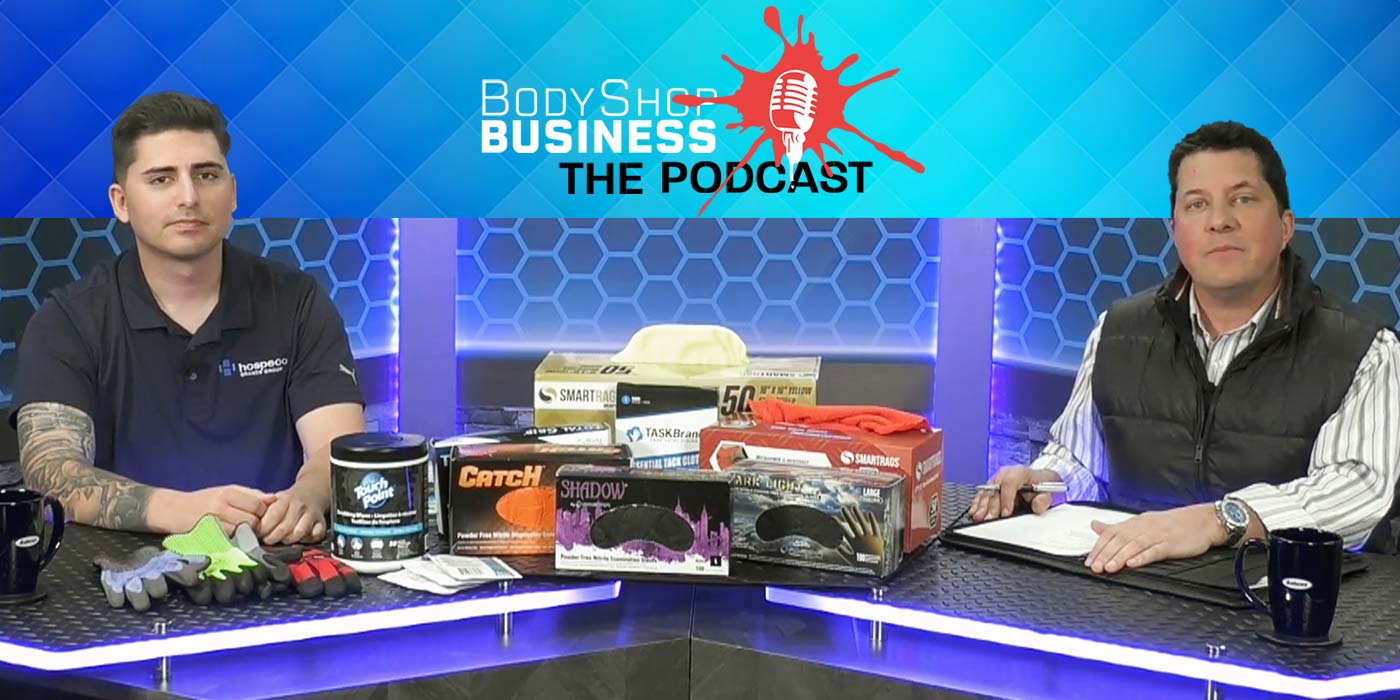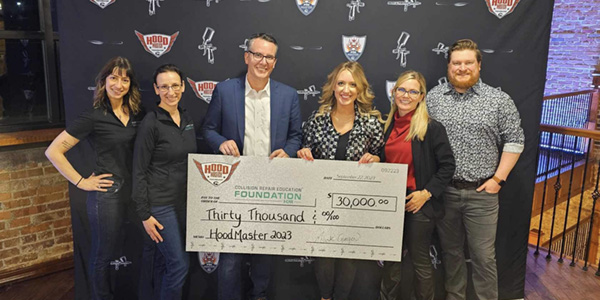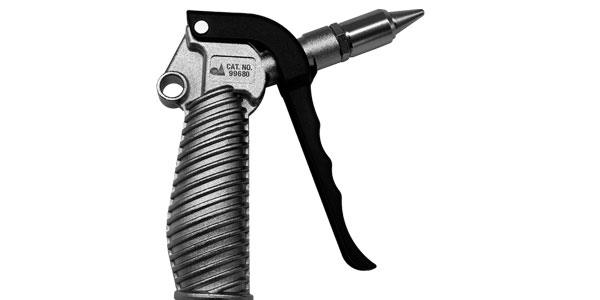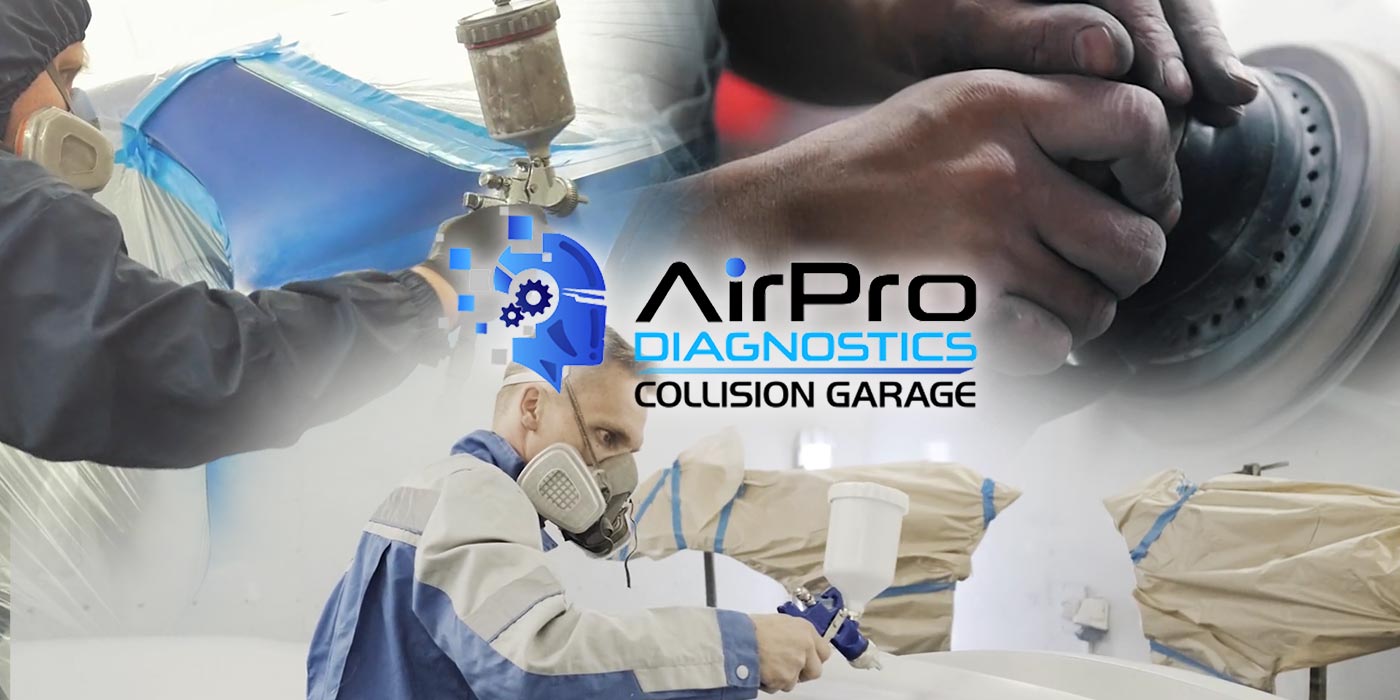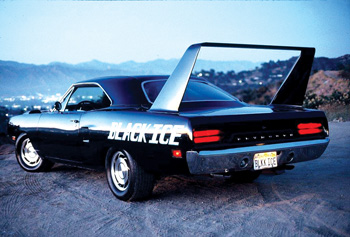 The perfect custom paint job depends largely on what kind of vehicle you’re putting that wild or mild job on. There are artists who use only black and create realistic-looking fire over the top. There are people who are obsessed with fades and other techniques. And there are painters who do a variety of three-dimensional tears, shadows, candies, pinstriping, etc. My philosophy is to do a theme that fits the car.
The perfect custom paint job depends largely on what kind of vehicle you’re putting that wild or mild job on. There are artists who use only black and create realistic-looking fire over the top. There are people who are obsessed with fades and other techniques. And there are painters who do a variety of three-dimensional tears, shadows, candies, pinstriping, etc. My philosophy is to do a theme that fits the car.
What the Customer Wants
The objective here is to do something the customer wants. If they don’t know exactly what they want, it’s fun to guide them through the process. I like it when a customer comes to me and already has a car that has been painted in a candy color but wants something simple to go with it.
I’ve done many stripes that are fades topped off with a quarter-inch or less pinstripe around the work. I’m currently working on a 1978 Chevy pickup that a customer wants to use to transport his Harley to events. Thus, I’m making it a tribute to Harley-Davidson. I two-toned it with black on top, silver on the bottom. The interior will be made black and silver to echo the theme, with the seats black with silver inserts. The break line will be done with a gold leaf around the edges of the design and some subtle skulls and fire inside the art area. The truck’s interior/exterior have been painted a la Chip Foose, which finishes the theme.
Or maybe you have a plain car like a 1970 Dodge Dart swinger. It’s yellow with a black vinyl top – a perfect candidate for something on the exterior to “wow” it up. So I’m thinking two-tone. Just define where you want the line and paint it a dark pearl black on top to blend with the black vinyl top. After the top side is painted, you need some sort of dividing line, maybe silver with some ghost images or whatever tickles your fancy, outlined in a non-offending pinstripe.
Snoopy and Wine
I once painted Snoopy riding his doghouse as the Red Baron for a Long E-Z homebuilt aircraft because the couple who owned it loved the Peanuts character. With no stencils, I hand-painted it on with some sterling paint.
One of my custom painters is working on a black Pantera right now. It’s super straight like a mirror, but when you pop the back lid to look at the engine, it has grapes, bottles of wine, leaves, a full fizzing wine glass, etc., all over the engine bay and underside of the lid. Yep, he loves wine.
Money Talks
One guy loved money, so we did his ’73 Camaro Z28 in PPG Radiance Indy Green over shamrock green. Then we put a tasteful hole in the hood for his blower to stick out a bit. Radiance is my favorite candy as it has micro crystals in the base that make light refract in all directions.
I found out how Radiance works from painting stripes on a new black Ford F-150 that faded from red to blue to green from back to front. As we approached it one night, you couldn’t see the truck from afar but you could see the stripes lit up like a street sign.
Super Bee
I’ve dreamed of custom painting my brother’s 1970 Super Bee we drove around in high school. The car has been sitting since 1976 and was supposed to have been completed for my his 30-year high school reunion. But we might make it for his 40th.
It would be a bright yellow base PPG 643 light chrome toner with a splash of 617 orange toner. This would be the perfect color for the car that has yellow in the bumblebee emblems.
Then I would do what legendary customizer Gene Winfield does: use my clearcoats on the vehicle to get a deep yellow with three different pearls. After basecoating with the yellow base, I would put on two wet coats of 2k clearcoat. Then I would mix up some clearcoat with an orange pearl in it.
When you put pearls in clearcoats, you have to be careful of them sliding down or moving around. They have to be frozen in the spot where they were sprayed. I would use fast reducer with some accelerator and fog on the clearcoat without any concern as to glossing it out. I would bake it at 140 degrees for 38 minutes and wait for it to dry for a full three hours. I would then lay down a full wet coat of clear, bake that and wait a day. I would then fog on a coat of clear with a tangerine pearl, making sure that all the pearl didn’t move around. I would repeat this whole process with gold pearl as my last pearl. Winfield did this all the time but used lacquer so he could do it fast. With urethanes, you have to wait longer.
Some painters are probably wondering why I don’t use pearl basecoats. It’s because I don’t want the binder in my clears that turns toners into basecoat because it ruins the clarity, and the paint job wouldn’t have the depth I desire. My final step would be to top it off with three thick coats of 2k clear. Now I have three layers of pearls sandwiched between coats of thick clear, which offers a depth you normally don’t see in most pearl jobs and even three-stage pearl jobs. In the end, the pearls will tone down the bright yellow somewhat, but overall will have some good depth to it.
Wild to Mild
So what is the perfect custom paint job? The secret lies somewhere in between, with the interior and wheels playing an important role. The most important thing is to impress the owner. After all, beauty is in the eye of the beholder.
Painting the Metallic Silver RHS Sill Panel on a Porsche
Q. I need to repair the RHS sill panel on a Porsche, which is attached to the quarter panel. The color is metallic silver and the car is 10 years old. What can I do to make this job turn out great?
A. Since the sill plate is not as exposed to the elements as the exterior of your Porsche, the paint should still be in pretty good condition, i.e. glossy and not faded too much in the door jamb areas. I assume the damage to be repaired is simply from shoes scuffing paint off the sill area through typical wear and tear.
Most Porsches use a very fine metallic on their silvers, so you have to assess the gloss level. Keep in mind that the prime paint formulas in most mixing systems for Porsches are usually very close.
You’re going to have to basecoat the entire sill plate and blend the silver into the inner door quarter panel lock pillar area, then clearcoat the job.
I would first polish the quarter panel lock pillar to see what kind of gloss appears. If it polishes out glossy, then you’ll have the true patina and, when you spray your clearcoat, both sides will match. If you leave the opposite side alone and want to match the patina and don’t succeed and your newly painted side is too glossy, then you could hand polish the unpainted original side to try and get some more gloss out of it. You’re going to have to blend in your base silver and clearcoat the area without having to get into painting any of the exterior surfaces.
I would mostly be concerned about the coarseness of the silver. One color can have 10 different variances. I experience this a lot, and the color formula variance cards come in handy.
I’ve tried to outline what I believe are the things you need to consider. Sometimes the door jambs are almost a semi-gloss finish because they don’t put much clearcoat on the inner panels compared to the exterior. If this is the case, when clearing, turn up your air pressure, use fast reducer and thin it out twice as much as normal, then add some accelerator to dull out your clear if need be. You’ll get coverage but less gloss to match the factory sheen as close as possible.
Tom Ferry is the head painter at Ketchikan Autobody and Glass in Ketchikan, Alaska. He can be reached at [email protected].










